Search the whole station Crushing Equipment
Lignite Dryer is a key equipment for Lignite drying process.Lignite is a low-grade coal with a low degree of coalification, with colors like brown and dark brown and a lack of cohesion. It has properties between peat and bituminous coal, with high water content, high volatility, low density, and a high oxygen content that makes it prone to fragmentation and spontaneous combustion.
Lignite dryer machine is a kind of rotary equipment for dewatering lignite coal. Lignite dryer is brown coal dryer and wood coal drying machine, which can realize continuous, industrial and automatic operation. It comes according to lignite characteristics. Zoneding lignite dryer was born with aim to meet environmental legislation and customers’ need.
To guarantee the quality of lignite and coal slime unchanged after the drying process, Zoneding engineers keep researching and have developed advanced lignite drying technology. Zoneding focuses on controlling the scorching wind temperature and rotating speed to reach higher drying efficiency. Lignite coal dryer machine can dewater the coal slime to the moisture content below 13%, and improve the combustion efficiency.
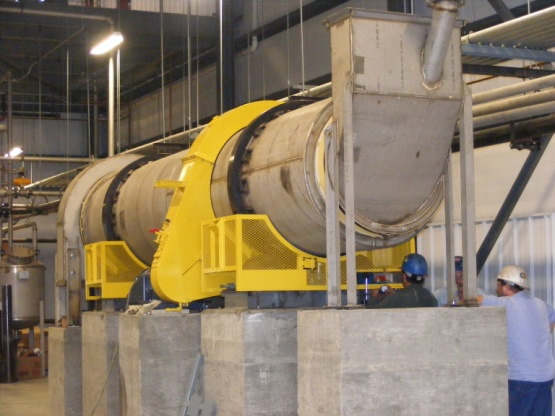
Lignite is a kind of mineral coal with minimum coalification degree. Because it is rich in volatile elements, it is easy to burn and generate smoke. Besides, lignite contains about 6-19% ash, which makes it pollute the environment a lot when burning. Therefore, washing process can improve the purity.
Lignite is a soft, brownish-black coal that represents the youngest stage of coal formation. While abundant worldwide, it includes two key drawbacks:
These factors make raw lignite an inefficient, low-value fuel.
Drying lignite is not just about removing water; it’s about fundamentally upgrading the material.
In addition to this physical characteristic, it is of high moisture and easy to self-ignite, which is a big issue for storage and transportation. Sometimes, good coal cannot meet the fuel requirement, for which lignite is in large demand as an alternative.
In view of the above, lignite drying machine become requisite. Dried lignite is in thermal power plant, chemical industry, metal recycling as well as catalyst supports, adsorbents, sewage purification etc. And the lignite dryer machine can also apply for drying fly ash, coke, coal as well as other granular, paste and powder materials.
The applications for lignite depend entirely on whether it has been dried. Raw, high-moisture lignite is almost exclusively used for one purpose: steam-electric power generation in power plants built directly at the mine site (“mine-mouth” plants). Its high water content makes it uneconomical to transport anywhere else. However, once the lignite is dried and upgraded, its applications expand dramatically. This stable, high-energy product can be sold and transported for use in:
A professional lignite drying system is a carefully staged, closed-loop process focused on safety and efficiency.
A lignite dryer is a highly specialized piece of industrial equipment, almost always a modified rotary dryer for lignite. It is fundamentally different from a standard dryer because it is engineered as a sealed, oxygen-starved pyrolysis environment. The primary goal is to heat the lignite to drive off water without providing the oxygen needed for it to burn. It is a chemical reactor first and a dryer second. The entire design philosophy revolves around mitigating the extreme fire and explosion risk associated with dried lignite dust.
A lignite dryer is a strategic asset for any industry that has access to cheap lignite deposits and a need for low-cost, high-volume energy. The primary industries that invest in lignite drying systems are:
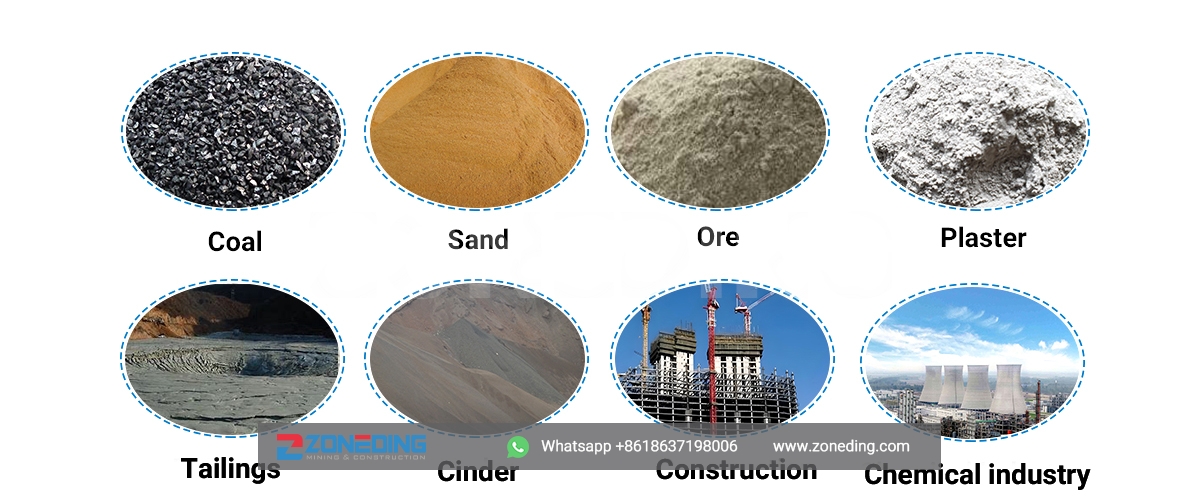
Investing in a professional lignite dryer offers transformative benefits.
A safe and effective lignite dryer is a system of interconnected, purpose-built components.
Lignite Dryer adopts the new technology of drying after crushing, which realizes the industrialization, automation and continuous production. When the lignite dryer machine works, wet lignite is fed into the crushing equipment firstly. Then low-temperature four-stage drying process is introduced and dries the wet lignite to the humidity of 13% or below.
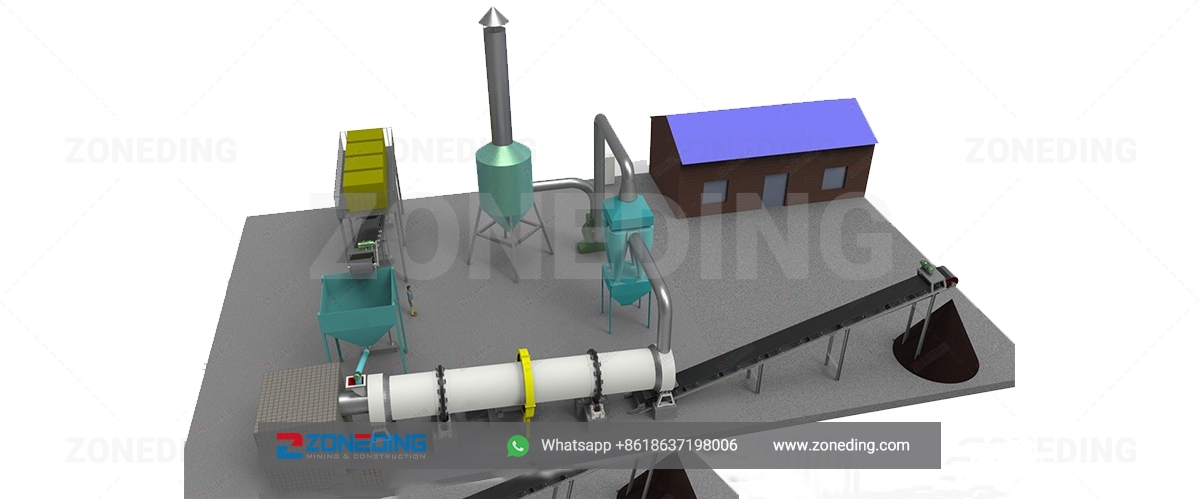
Working Principle of Lignite Dryer
The process is a masterclass in controlled pyrolysis.
First Level: 400 ℃, high temperature removes most of the moisture and make sure the lignite not change chemically;
Second Level: 300 ℃, strong wind produced works in high efficiency to ensure that the lignite is not coking;
Third Level: 120-210℃, with the crushing function of the cleaning devices inside the cylinder, wet lignite flows in the cylinder and is dried;
Fourth Level: 60-80℃, the removal of water depends on low-temperature current produced by the induced draft system.
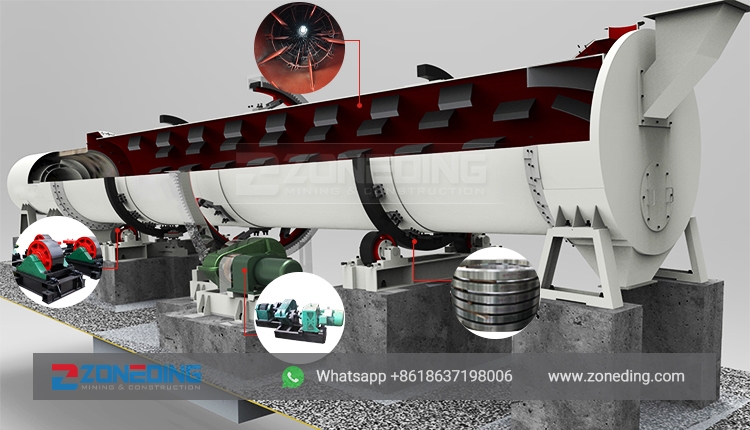
Therefore, lignite dryer can take full advantage of the coal resources and reduce the emission concentration, so as to achieve energy-saving emission reduction and environmental protection objectives.
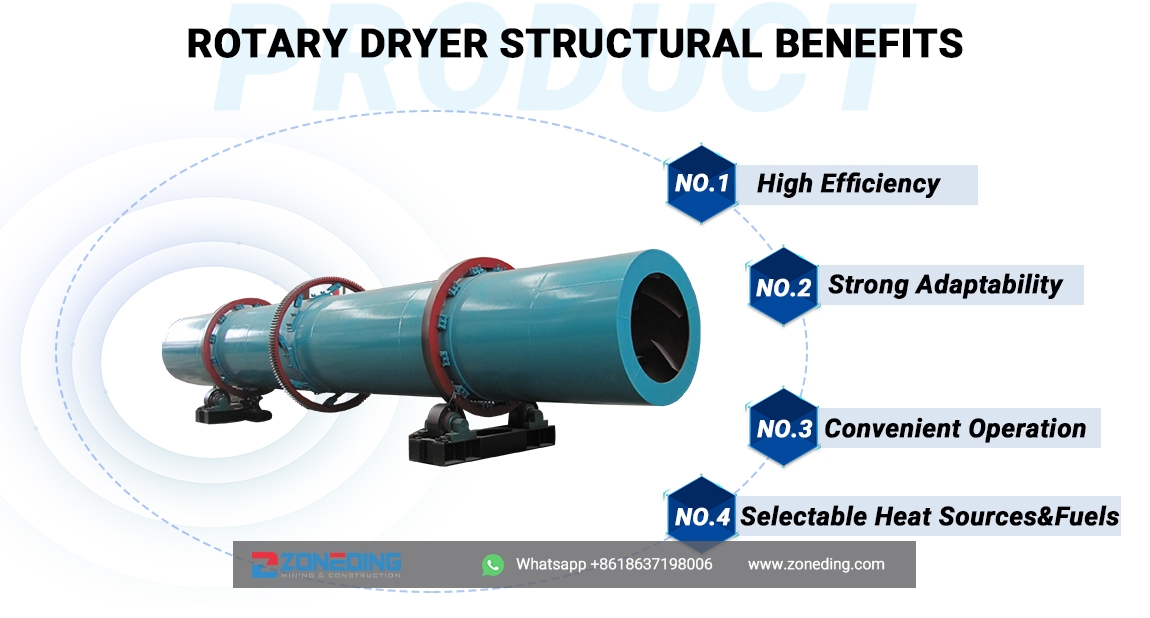
At ZONEDING, our lignite dryer design is built around the “safety first” principle, incorporating decades of experience with dangerous materials.
| Spec./m (Dia.×Length) | Shell Cubage (m³) | Capacity (t/h) | Installation Obliquity(%) | Highest Inlet Air Temperature(℃) | Main Motor (kw) | Weight (t) |
| Φ1.2×8.0 | 9.0 | 1.9~2.4 | 3~5 | 700~800 | 7.5 | 9 |
| Φ1.2×10 | 11.3 | 2.4~3.0 | 3~5 | 700~800 | 7.5 | 11 |
| Φ1.5×12 | 21.2 | 4.5~5.7 | 3~5 | 700~800 | 15 | 18.5 |
| Φ1.5×14 | 24.7 | 5.3~6.6 | 3~5 | 700~800 | 15 | 19.7 |
| Φ1.5×15 | 26.5 | 5.7~7.1 | 3~5 | 700~800 | 15 | 20.5 |
| Φ1.8×12 | 30.5 | 6.5~8.1 | 3~5 | 700~800 | 18.5 | 21.5 |
| Φ1.8×14 | 35.6 | 7.6~9.5 | 3~5 | 700~800 | 18.5 | 23 |
| Φ2.2×12 | 45.6 | 9.7~12.2 | 3~5 | 700~800 | 22 | 33.5 |
| Φ2.2×14 | 53.2 | 11.4~14.2 | 3~5 | 700~800 | 22 | 36 |
| Φ2.2×16 | 60.8 | 13.0~16.2 | 3~5 | 700~800 | 22 | 38 |
| Φ2.4×14 | 63.3 | 13.5~16.9 | 3~5 | 700~800 | 37 | 45 |
| Φ2.4×18 | 81.4 | 17.4~21.7 | 3~5 | 700~800 | 37 | 49 |
| Φ2.4×20 | 90.4 | 19.3~24.1 | 3~5 | 700~800 | 45 | 54 |
| Φ2.4×22 | 99.5 | 21.2~26.5 | 3~5 | 700~800 | 45 | 58 |
| Φ2.6×24 | 127.4 | 27.2~34.0 | 3~5 | 700~800 | 55 | 73 |
| Φ3.0×20 | 141.3 | 30.1~37.7 | 3~5 | 700~800 | 75 | 85 |
| Φ3.0×25 | 176.6 | 37.7~47.1 | 3~5 | 700~800 | 75 | 95 |
| Φ3.2×25 | 201 | 42.9~53.6 | 3~5 | 700~800 | 90 | 110 |
| Φ3.6×28 | 285 | 60.8~76.0 | 3~5 | 700~800 | 160 | 135 |
Q1. Who are we?
A1: Zoneding Machine is manufacture of mining machine which is located in Henan province of China. We have been professional on grinding mill, stone crushers, sand making machines, production line for ore beneficiation, sand and aggregate industries since 2004.
Q2. What is our main crusher products?
A2: Jaw Crusher/Cone Crusher/Vibrating Screen/Sand Making Machine/Mobile Stone Crusher Plant/Vibrating Feeder/Fine Sand Recovery Machine/Screw Sand Washing Machine/Impact Crusher/Vertical Shaft Impact Crusher/Hammer Crusher/Belt Conveyor/Stone Crushing Plant.
Q3. What about the price ?
A3: We are able to give you competitive price than market one cuz we are factory, and we have a policy that ” for saving time and absolutely honest” business attitude,we quote as low as possible for any customer, and discount can be given according to quantity
Q4. What services can we provide?
A4: Accepted Delivery Terms: FOB, CFR, CIF;
Accepted Payment Currency: USD,EUR, CNY;
Accepted Payment Type: T/T,L/C;
Language Spoken: English,Chinese,Spanish,Arabic,French,Russian
Q5: When will the delivery be?
A5: For inventory goods, we can ship them within 3-5 days. For customized equipment and other devices, we will specify according to clients’ needs as we quote.
Buy industrial gypsum dryer for sale. Efficiently remove moisture from gypsum rock & powder. Improve product quality & processing speed.
Rotary cooler for sale. Efficiently cool hot materials discharged from kilns & dryers. Improve process speed & material quality.
Buy industrial rotary kiln for sale. Achieve efficient high-temperature thermal processing, calcining, roasting & drying of minerals, ore, cement & more.
Find high-efficiency sludge dryers for sale. Reduce sludge volume, cut disposal costs, and improve handling. Ideal for municipal & industrial applications.
Discover high-performance aggregate and sand dryers for sale. We offer triple-pass and rotary drum models for efficient moisture removal. Get a quote today!
loading…
已经是到最后一篇内容了!
We use cookies to ensure that we give you the best experience on our website. If you continue to use this site we will assume that you are happy with it.
Privacy Policy